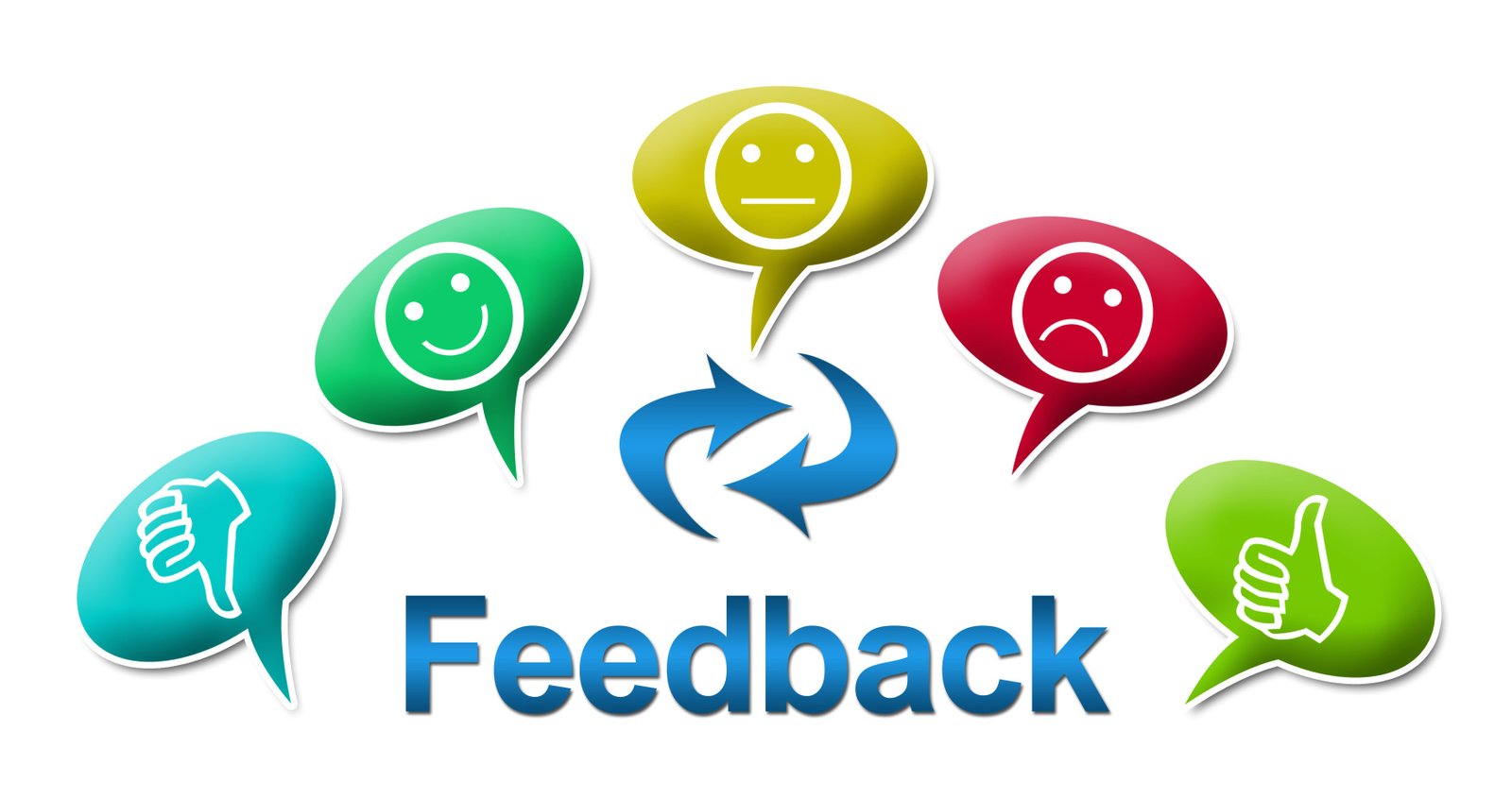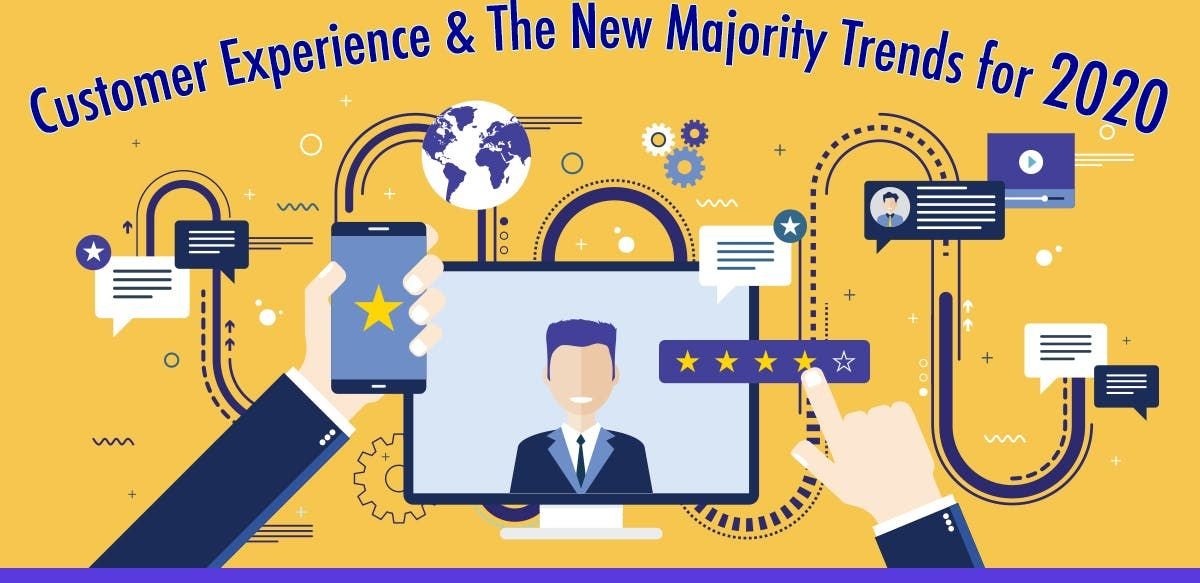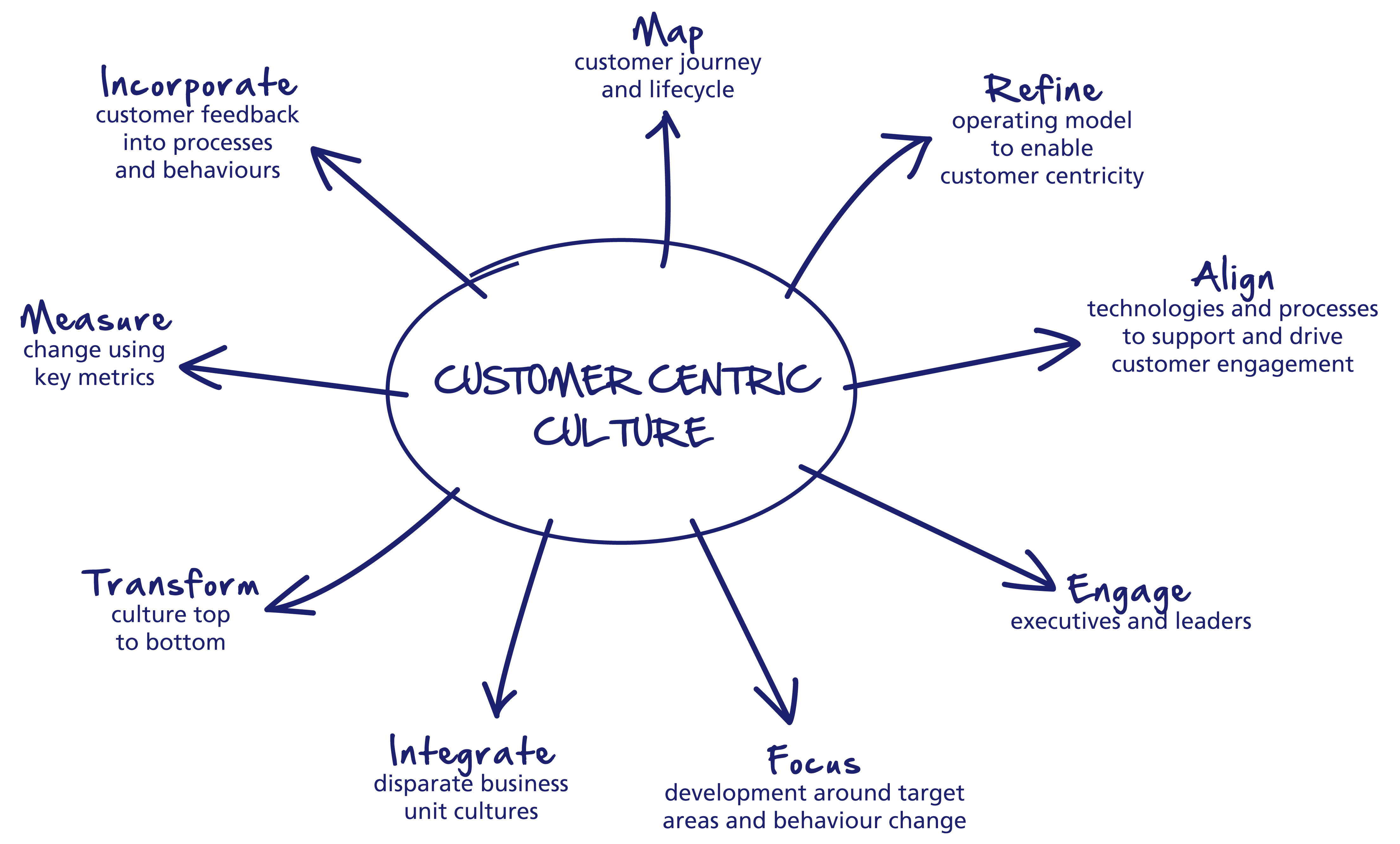Understanding the various touchpoints you have with your customers is key to delivering a memorable customer experience.
Once you’ve mapped out your touchpoints, it’s often helpful to group them into channels. That’s the focus of this blog post.
The most common channels
Websites: refers to customers visiting websites to gather information about a company. Can include both mobile and regular versions of the website.
Native Mobile App: refers to customers who download a company’s iOS or Andriod app, and feedback is gathered about their experience with it.
Contact Center: an important touchpoint where customers call for more information or assistance. Online chat is another part of modern contact centers.
In Location: refers to an actual in-person customer experience, such as a retail store, restaurant, or hotel.
Field Services: customers interact with a company in their home.
Mapping your touchpoints
When you look at all the touchpoints on your map, each of them will likely fall into one of these five channels.
No matter how your customer interacts with you, the ultimate goal is to have a consistent “omnichannel” experience.
When your in-location experience is different from your web experience, or when your web experience is different from the experience a customer has with your native mobile app, this inconsistent CX will create problems.
Customers might feel like the company cares about them after a positive field service experience, but if the contact center fails to provide the same level of experience, the customer will be disappointed.
Keep in mind that if you’re working with a premium brand, all channels will need to deliver an outstanding customer experience. If you’re working with a mid-tier, value-oriented brand, the goal may be to achieve a certain standard throughout each channel, such as professionalism or efficiency.
Gathering omnichannel feedback
If you want a consistent omnichannel experience, make sure you are listening to your customers in each channel! You can gather feedback from these five channels in various ways.
For example, you might ask about their most recent experience with a field services representative through an email survey. How satisfied were you with our technician’s most recent visit to your home? Why? Were there any problems? If so, please describe them.
Or you can gather feedback via methods that are channel specific.
For website feedback, pop-up surveys can ask the customer for feedback while they are on the website or after they leave.
When a customer uses a mobile app, a survey can be embedded into the app asking them to provide feedback.
An interactive voice response (IVR) survey or a computer-generated survey can be used after a customer interacts with a contact center—the system directs the customer to the survey when the call is complete.
We are also seeing more and more text surveys, or Short Message Surveys (SMS), these days as a substitute for email surveys.
The goal is to obtain feedback from the customer in whichever way they prefer to provide you with that feedback.
It will largely depend on the customer. If your primary customers are millennials, they might prefer a text message survey. If you’re working with baby boomers, they probably prefer completing a survey via email at a time that’s convenient for them.
What Does the Future of CX Look Like?
If you know how critical Customer Experience is to the happiness of your customers and your team, you’re probably already trying to anticipate the next big trends in CX.
Things That Won’t Change Anytime Soon:
1. Customer Experience Still Reigns Supreme
More customers are stating that customer experience is a big part of how they make purchasing decisions. This means more of us are demanding better treatment and are willing to pay for it.
According to a large study by PWC, 73% of us say the customer experience is an important factor.
68% of business-to-business marketers agree that delivering a consistent, high-quality customer experience is very important in today’s marketplace.
Despite this, only 49% of Indian consumers say they’re getting a good Customer Experience from companies.
These numbers will keep going up, meaning that if you aren’t on board the CX train by now, you are already behind your competition.
But don’t fret — Instead, think of closing the CX gap as a huge opportunity. If your organization can address and close the gap, you’ll have a massive advantage in the future.
2. Employee Experience Will Remain One of the Top Influences on Customer Experience
There is no doubt the way employees feel influences how they treat customers.
But this isn’t just touchy-feely stuff. Engaged employees are in demand, and frankly getting harder to keep.
Investing in employees can pay off in big ways, like how Google gives employees 20% of their time to dedicate to their own projects. These independent, employee-driven ideas have created products like Google Maps and Gmail!
So it’s not terribly surprising to learn that the organizations who earned “good” or “very good” employee engagement ratings in the State of CX Management 2018 report by the Temkin Group (now part of the XM Institute) are also much more likely to be ranked as CX Leaders.
In fact, the percentage of CX Leaders who earned “good” or “very good” employee engagement ratings is more than 5-times larger than the percentage of CX Laggards.
Your employees matter more than most pieces of the customer experience puzzle. Don’t expect this to change in 2020 or the future beyond it.
So… What Changes Will Come to CX in 2020?
1. Customer Experience Will Become Part of the Business Operations in More Organizations… But it Will Continue to be an Unpredictable Journey.
More organizations are understanding the importance of customer experience, but they are still struggling with what to do about it.
Some are assigning CX as an additional responsibility to leaders like Chief Marketing Officers or Retail Operations leaders. Some are just asking everyone in the organization to “own” customer experience.
We need to mature past these ways to really start operationalizing CX in our organizations.
This means creating a dynamic loop of gathering customer feedback, assigning real responsibilities and treating CX like we treat sales, marketing or technology.
It’s not an extra part of doing business, it’s simply a part of doing business well.
More organizations will move to this phase in the coming years, but we still have a long way to go!
2. Agile principles will be brought to CX Innovation
As we (hopefully) move into an era when we’re responding to customer feedback and allowing for more innovation around experience design, we’ll need to act a lot faster than we are today. Organizations that prioritize quick improvements using agile principles will move to the head of the pack.
While agile is typically used among development teams, these same principles to harness change on behalf of customers can be used to innovate around CX.
It’s not just about the technology, it’s about innovation for things like in-store experience and better customer communications.
3. Technology WILL replace some roles in customer service and other departments. New roles will be created.
It’s true that the robots are coming for (some) of our jobs.
Automation, artificial intelligence (AI) and machine learning will drive real, lasting changes to the contact center structure and overall org charts of many brands. Already, chatbots and other tools are serving customers in big and small ways.
The latest prediction is a 136% increase in the number of organizations that use AI chatbots from 2019 to 2020!
While this can sound frightening, the role of these technologies will actually help customer service agents and others to provide better experiences for customers.
When leveraged well, this means human agents will have customer histories and relevant data served at the appropriate time. The agent can then provide more personalized, relevant experiences in a faster, more convenient way to customers.
It’s critical to provide a seamless transfer between human agent and bot as we learn just what this type of technology can do best. Now we need a different type of role for some of these agents. We need humans to train and supervise the automated experiences these bots are creating.
We can’t think we’ll simply “flip the switch” and replace our human agent force. Humans are still required to connect with customers when they need us the most. Humans are also the only way these tools will be developed and designed in ways that truly put the customer first.
4. Customers will not tolerate outdated technology, processes or communications.
Customers understand so much more than they ever did.
Because we all have access to so much more information now, brands can no longer hide behind press releases or advertising.
As customers, we want brands to respond not just to our needs, but the needs of the world around us. Outdated technology is a signal to customers that the overall experience might not be a priority. Watching employees struggle with processes that don’t make sense is a point of frustration for customers.
Communications with customers also have to not only be seamless, but updated in their language and tone.
Customers don’t want to interact with formal, stuffy brands using industry-specific terms and acronyms. They want to be in conversation with them.
This means reducing the jargon and replying as a human does. It also means reviewing your communications for outdated terms around our shared humanity, with terms referring to gender, race, and ability given particular care.
5. Soft skills will stop being seen as a nice to have and become the important “Empathy Toolkit” we need in CX.
Let’s make 2020 the year we kill the term “soft skills” in business. This vague description of ideas like getting along with others and listening doesn’t serve us or our customers.
These soft skills – listening well, responding with empathy and understanding, proactively reading the emotional state of a person or situation – are absolutely critical to great customer experiences.
And let’s not forget this applies inside the organization, too. Engaged employees not only serve their customers with this respect and compassion but also serve their colleagues and partners this way, too.
Using the term “soft skills” make them sound secondary and unnecessary. CX Leaders in the future will prioritize them and give them the respect they deserve to hire, train and empower employees.
Client satisfaction is more important than ever. No matter the industry, customers will make comments—online and off—that affect the future of your business. Entrepreneurs must prioritize Customer Success (CS) and teach teams to deliver exceptional service that builds meaningful relationships with clients.
Blount goes on to explain that this change puts, “advocacy, referrals, and personal recommendations on a new pedestal of importance.” Potential customers believe the things they hear and read about your business. Taking steps to ensure clients say GOOD things is imperative.
Here is how to deliberately create a customer-centric organization that builds long-lasting client relationships, and in turn, a solid reputation.
Make it easy to work with you
To create a successful CS organization, be nimble and flexible on processes and services. There will always be elements that an organization must keep intact to function, such as using a CRM system, maintaining your service level agreements and setting critical operational processes. However, there are variables that you can augment to make working with your partners easier.
Adapting to a client’s workflow (when you can) helps to build rapport, trust and a strong partnership that can weather the unforeseen events that inevitably happen in a business relationship.
That said, don’t sacrifice your core values or overpromise—a common mistake entrepreneurs make, especially in the technology industry. It is not feasible to say “yes” to every one-off request. You can be easy to work with without changing your value proposition.
Be flexible internally, too
Don’t be afraid to try new things as you consider how to best support your customers. For example, we restructured our CS team to find what works best. First, we divided our team by type of client. As we grew, we moved to a regional structure in which team members support all clients within a particular region. This made it easier to build strong relationships because our team understands the nuances of each region.
Remove the element of fear
If your employees are disgruntled, customers feel it. All your employees, especially the CS team, need to feel invested in and secure. To do so, make it OK to fail. Tell your team (and show your team) that if they make a mistake, you will be there to help correct it and put processes in place to prevent it from happening again.
An example of this is when a new team member accidentally inserted the wrong creative for a campaign and we had to refund a client. These mistakes happen, but we can future proof this type of situation, change the process, or even build something into our User Interface to insure this mistake doesn’t happen again. People are going to make mistakes and that’s ok, but it’s important to use the opportunity as a great lesson learned, allowing us to teach these lessons to future employees. As a business owner, accept that mistakes are going to occur, especially if you are encouraging people to make bold, swift decisions.
Create a bond strong enough to withstand problems
Customer Success means owning the “sale after the sale,” and sometimes, that means conflict resolution. This could mean a client is unhappy because a campaign didn’t perform as expected or an ad didn’t render properly. But thanks to strong emotional connections with customers, they trust you to reconcile the issue.
To build a high level of trust, understand your clients’ goals. Ask them about their objectives and challenges. Understand the environment they operate in and how their success is evaluated.
Hire with care
Client Success requires the right fit for the right role. You cannot find success unless you have the right people. Be painstaking about your hiring. When hiring with CS in mind, look for people with exceptional communication skills and the ability to learn quickly and navigate conflict. These attributes, along with culture fit, matter more than industry experience. It is important to ask insightful questions during the interview process to ensure that the candidate is a good fit for your organization and you are a good fit for them! Be sure that you will be mutually able to achieve each other’s most important needs.
Consider the rise of customer success. Because 70 percent of consumers feel contacting customer service is a frustrating experience, few speak up until they’ve had a truly bad time. The trouble is, just one negative experience is all it takes to send more than half of consumers packing for a competitor.
That’s why, instead of waiting for customers to call in, customer success managers monitor usage data like average session duration and login frequency. Although customers might hesitate to reach out about a page that won’t load, constant refreshing can signal that they’re struggling.
But customer success isn’t the only area where leaders need to pay
With almost any product, highly engaged users make up a small percentage of total users. Among those talking about the product, however, engaged users tend to dominate the conversation. As a result, companies often assume that what engaged users want is what the user base as a whole wants.
Shared some insights for every type of company to consider when it comes to improving CX.
- To the customer, it’s all one big team: Customers don’t care which department they talk to when they need help. They just want to get their questions answered and their problems resolved. A company may have different teams, but the customer doesn’t care. As mentioned above, the solution is to bring all interactions and data into one place. When technology doesn’t work together, neither can teams. When teams can’t work together, they can’t give a personalized customer experience. This frustrates both customers and employees.
- Create consistency in your processes to create consistency for the customer: When companies get big, they often have multiple teams with multiple processes. This can become painfully frustrating for customers who end up talking to different people in different departments. There could be conflicting information and explanations. That leads to confusion, and often a loss of confidence. Ultimately, that can lead to lost business.
The company may define its brand promise, but it is the customer who decides whether or not the company delivered on its promise. There’s a lot riding on delivering a positive customer experience. You hire and train good people, but you must also give them the tools they need to deliver a CX that not only meets the customers’ expectations but makes them want to come back. Be there for them – no matter how they reach out to you – be consistent, and build your brand through satisfied customers.
Consumers interact with brands across a multitude of touch points through the buyer’s journey. Every interaction makes an impact on your prospects that will set the stage for the relationship, making it crucial to ensure that every touch point comes with a positive experience, but above all, companies must monitor the big picture: the total experience customers have from end-to-end in doing business with your company.
In order to gain more meaningful insights into the results, we had respondents categorize themselves into one of four levels: ignore, novice, competent, and mature.
Ignore – These are companies that don’t view customer experience as a crucial differentiator. There are no efforts towards developing a CX strategy or measuring CX initiatives.- Novice – These are companies that recognize the need to improve a customer’s experience. They’ve put basic steps in place to identify and measure CX-related issues, but don’t have a clear CX strategy in place.
- Competent – These companies make an effort to deliver a high-quality experience for their customers. They have a clear CX strategy with processes firmly in place to measure results.
- Mature – These are the cream of the customer experience crop. Their CX strategy is embedded in everything they do. Customer feedback forms the core of their strategy and decision-making, and they continuously iterate their CX practices to meet customer demand.
Only 12% of companies identify as being Mature CX companies, while 38% identify themselves as Young, 40% as First Steps, and 10% as
Click here to know more details about CUSTOMER EXPERIENCE.
CXREFRESH CX STRATEGIES CUSTOMER EXPERIENCE GLOBAL CX CUSTOMER SUCCESS






